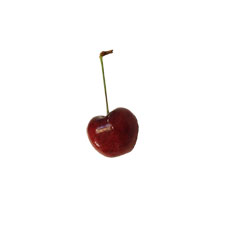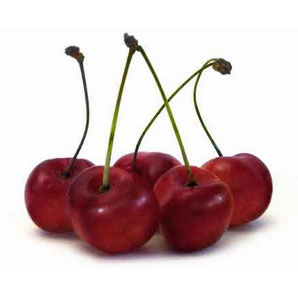Phytophthora Crown, Root, and Collar Rot
Beginner
This pest affects:
 |
 |
 |
 |
 |
 |
Scientific Name
Phytophthora spp.
Identification
- Reduced tree vigour and growth
- Yellowing and wilting leaves
- Premature leaf drop
- Gum exudation on the trunks and sometimes on the lower limbs
- Dark sunken cankers on lower trunk extending below the soil surface, sometimes girdling the tree
- Bark is brown-black and water-soaked
- Orange-brown necrosis of the inner bark of crown and woody roots which eventually turn dark brown when the tree dies
- Distinct dark line between healthy and necrotic tissues
- Lesions may be initially just on woody primary roots in spring with trunk cankers developing by early summer
- Infected trees may decline slowly over one or more years and eventually die
- In those trees that decline gradually, a reddish or purple discoloration of the leaves often occurs in autumn, while leaves on healthy trees remain green
Often Confused With
Iron deficiency - Iron deficiency leaves are yellow between the veins, but the veins will remain green soils
Waterlogged soils – roots have blue-black mottled colour and grey discoloration of the woody cylinder of deep roots
Winter injury – necrosis of bark and cambial tissue close to the soil; bark splitting; confined to above-ground parts of trunk
Peachtree borer injury – frass, larvae or pupae may be present
Rodent feeding – mean, nasty fang marks; no orange-reddish inner bark discoloration
Period of Activity
Phytophthora zoospores are released and tree tissues are most susceptible to infection when soils are saturated for 24 hours or more.
Scouting Notes
The first symptoms on severely infected trees are often observed in spring. Infected trees can decline slowly over several years or die within weeks of the first symptoms, depending on the size and health of the tree. Monitor trees for reduced shoot growth and small fruit size. Determine whether these occur in areas of the orchard that tend to be waterlogged – water remains on the surface for long periods of time, the mud has a “swampy” odour from anaerobic conditions, the cover crop looks weakened as well. Look for sunken cankers and gumming at the crown area.
To diagnose crown and root rot, remove soil around the crown and roots of declining or dead trees and scrape the bark away along the trunk at the base of the tree and around the roots. Look for orange to dark reddish-brown canker or streaks along the cambium of the crown at ground level or just under the epidermis of the roots. For positive identification, send a sample of the diseased roots or crown tissue to a qualified pest diagnostic laboratory for accurate identification.
Thresholds
None established.
Advanced
This pest affects:
 |
 |
 |
 |
 |
 |
Scientific Name
Phytophthora spp.
Identification
- Reduced tree vigour and growth
- Yellowing and wilting leaves
- Premature leaf drop
- Gum exudation on the trunks and sometimes on the lower limbs
- Dark sunken cankers on lower trunk extending below the soil surface, sometimes girdling the tree
- Bark is brown-black and water-soaked
- Orange-brown necrosis of the inner bark of crown and woody roots which eventually turn dark brown when the tree dies
- Distinct dark line between healthy and necrotic tissues
- Lesions may be initially just on woody primary roots in spring with trunk cankers developing by early summer
- Infected trees may decline slowly over one or more years and eventually die
- Trees may also appear healthy in the spring, but die suddenly in the latter part of the growing season.
- Rapid death of trees usually occurs following excessively wet periods
- In those trees that decline gradually, a reddish or purple discoloration of the leaves often occurs in autumn, while leaves on healthy trees remain green
- Trees weakened by root rot are easily pushed over by heavy winds due to lack of support from rotten roots
Often Confused With
Iron deficiency - Iron deficiency leaves are yellow between the veins, but the veins will remain green soils
Waterlogged soils – roots have blue-black mottled colour and grey discoloration of the woody cylinder of deep roots
Winter injury – necrosis of bark and cambial tissue close to the soil; bark splitting; confined to above-ground parts of trunk
Peachtree borer injury – frass, larvae or pupae may be present
Rodent feeding – mean, nasty fang marks; no orange-reddish inner bark discoloration
Biology

  |
Apple, cherry, peach, and apricot trees are susceptible to Phytophthora collar and root rot. |


|
Pear and plum trees appear to be relatively resistant though not immune |
Phytophthora persists in the soil mainly as dormant resting spores or in a vegetative growing form within infected plant tissue. When the soil is moist or wet, reproductive structures (sporangia) are produced. These sporangia are filled with the infective spores of the fungus (zoospores), which are expelled into the soil in significant numbers only when it is completely saturated with water. The microscopic zoospores then use tail-like structures to swim short distances through the water-filled soil pores and find susceptible plant tissues, to which they are chemically attracted. Zoospores may also swim to the soil surface, where they can be carried relatively long distances by runoff water and contaminate new soils or ponds used for irrigation water.
The severity of the infection period is roughly proportional to the number of days the soil remains saturated and how quickly it drains. The number of saturation periods a tree is exposed to is also important because additional zoospores are produced and released by the fungus growing in new infection sites each time conditions become favorable.
Whether infection occurs once zoospores reach root or crown tissues depends largely on the inherent susceptibility of the rootstock and its physiological condition.
Symptom expression depends upon how much of the root or crown tissues are affected and how quickly they are destroyed. Generally, crown rots advance rapidly and trees collapse and die soon after the first warm weather of spring. Leaves of such trees wilt, dry, and remain attached to the tree. Chronic infections, usually of the roots, cause reduction in growth and early senescence and leaf fall. These trees may be unthrifty for several years before succumbing to the disease. Phytophthora infections typically kill young trees because their root systems and crown areas are small compared to those of mature trees.
Most actively growing trees tolerate a certain amount of root and crown rot, and may limit the advancement of the disease for a short while. However, dormant young trees or trees growing slowly due to other stresses are most vulnerable particularly when the pathogen is still active.
Period of Activity
Phytophthora zoospores are released and tree tissues are most susceptible to infection when soils are saturated for 24 hours or more.
Scouting Notes
The first symptoms on severely infected trees are often observed in spring. Infected trees can decline slowly over several years or die within weeks of the first symptoms, depending on the size and health of the tree. Monitor trees for reduced shoot growth and small fruit size. Determine whether these occur in areas of the orchard that tend to be waterlogged – water remains on the surface for long periods of time, the mud has a “swampy” odour from anaerobic conditions, the cover crop looks weakened as well. Look for sunken cankers and gumming at the crown area.
To diagnose crown and root rot, remove soil around the crown and roots of declining or dead trees and scrape the bark away along the trunk at the base of the tree and around the roots. Look for orange to dark reddish-brown canker or streaks along the cambium of the crown at ground level or just under the epidermis of the roots. For positive identification, send a sample of the diseased roots or crown tissue to a qualified pest diagnostic laboratory for accurate identification.
Thresholds
None established.
Management Notes
There is no cure once Phytophthora has infected and become established in fruit trees.
Soil fumigation before planting is ineffective in controlling Phytophthora root and crown rots because the fumigant never completely eradicates existing inoculum from the soil and Phytophthora spp. are easily reintroduced.
When planting a new orchard, select fields with good drainage and light soils if possible. If the soil is heavy or retains water for prolonged periods of time, install sub-surface drainage tiles.
Avoid overwatering by managing irrigation accurately.
Select rootstocks with some resistance to Phytophthora particularly when planting into heavy poorly drained soils. Pears are quite resistant. Among stone fruits, plums are relatively resistant, whereas other stone fruit are susceptible to very susceptible. Mahaleb is the most susceptible cherry rootstock, whereas Mazzard, Morello, and Colt are somewhat more resistant and would be recommended on heavier soils.
Carefully inspect roots, crown and scion of young trees to ensure only trees with healthy crowns and roots are planted in the orchard.
If crown rot occurs after trees are planted, improve drainage in the vicinity of the trunk, being sure water is not allowed to pool in a soil “saucer” around the base of the trunk.
Information found above has been excerpted from:
- http://www.ent.uga.edu/peach/peachhbk/fungal/phytophthora.pdf
- http://www.ca.uky.edu/agcollege/plantpathology/ext_files/PPFShtml/PPFS-FR-T-10.pdf
- http://www.apsnet.org/publications
- http://ohioline.osu.edu/hyg-fact/3000/pdf/HYG_3029_08.pdf
- http://nysipm.cornell.edu/factsheets/treefruit/diseases/phyt/phyt.asp
- http://www.ipm.ucdavis.edu/PMG/r611100611.html











